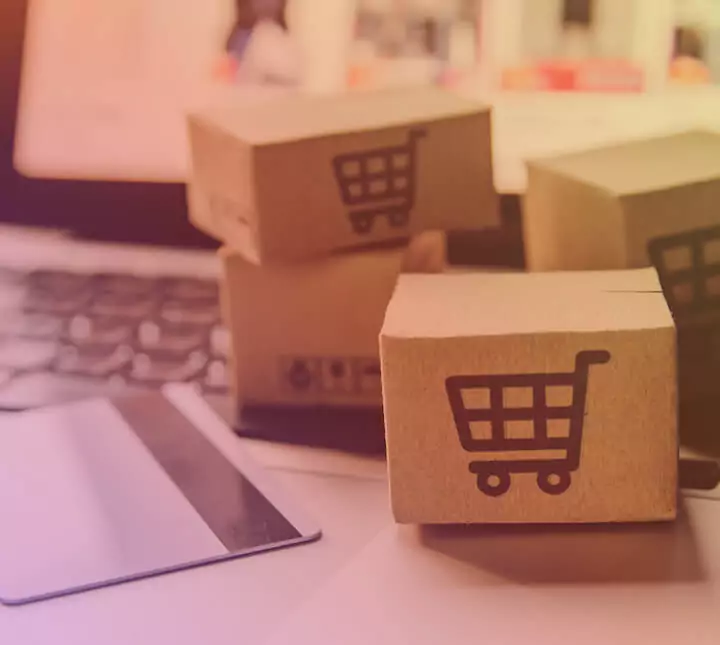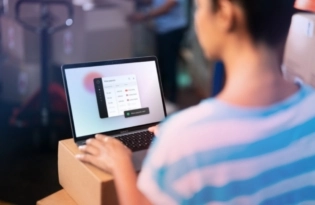A guide to Ecommerce in Southeast Asia
Southeast Asia is a booming eCommerce hub with $67B in sales revenue and 10% annual growth. This report highlights the leading markets, popular product categories, and three top marketplaces in the region. Get valuable insights to help you expand your business.

Tapping into a $67 billion market

With an estimated $67 billion in sales revenues and a 10% forecasted annual growth rate, Southeast Asia is an eCommerce powerhouse. The region boasts more than 400 million online users, including 40 million that were added in 2020 across Singapore, Malaysia, Indonesia, the Philippines, Vietnam and Thailand, making it one of the world’s fastest growing internet markets.
While the spike in online traffic last year was largely due to the COVID-19 pandemic, the shift to eCommerce is likely here to stay. In this report, we’ll be diving into the specifics of eCommerce in Southeast Asia, including the leading markets and the most popular product categories, as well as an overview of three of the region’s largest marketplaces.
We hope that the information provided here will serve you as you grow your business and expand into one of the world’s hottest eCommerce markets.
eCommerce in Southeast Asia is forecasted to grow by 10% annually
The leading e-commerce markets in a rapidly developing region

COVID-19’s impact on eCommerce throughout Southeast Asia was profound, with countries throughout the region recording significant year-over-year (YoY) revenue growth throughout 2020. What’s more, analysts predict that the trend will intensify in the coming years.
In Indonesia, by far the largest eCommerce market in SEA, eCommerce revenues increased by more than 50% in 2020 to reach $32 billion. This trend is expected to continue, with revenues set to reach $83 billion by 2025. Other countries in the region are following a similar trajectory; in the next four years revenues are expected to grow by 166% in Thailand, 314% in Vietnam, 116% in Malaysia, 275% in the Philippines and 100% in Singapore.
Indonesian eCommerce revenues are expected to reach $83 billion by 2025
Knowing what to sell in southeast Asia and on which marketplace

When expanding your business into SEA, it’s important to remember that the region isn’t uniform, and each country has its own shopping habits. Here is a breakdown of the leading product categories according to 2020 revenues in the individual markets in Southeast Asia, as well as an overview of three of the region’s leading marketplaces.
Fashion: 32%
Electronics & Media: 23%
Food & Personal Care: 15%
Furniture & Appliances: 15%
Toys, Hobby & DIY: 15%
Fashion: 32%
Electronics & Media: 26%
Toys, Hobby & DIY: 19%
Furniture & Appliances: 13%
Food & Personal Care: 10%
Electronics & Media: 26%
Fashion: 24%
Furniture & Appliances: 18%
Food & Personal Care: 17%
Toys, Hobby & DIY: 15%
Electronics & Media: 33%
Food & Personal Care: 32%
Toys, Hobby & DIY: 19%
Fashion: 10%
Furniture & Appliances: 6%
Airlines & Hotels: 29%
Clothing & Footwear: 13%
Food & Drink: 11%
Electronics: 8%
Health & Beauty: 8%
Airlines & Hotels: 29%
Clothing & Footwear: 12%
Electronics: 11%
Food & Drink: 10%
Health & Beauty:8%

Established: 2015
Advantages compared to other marketplaces:
- Southeast Asia and Taiwan’s largest eCommerce platform.
- #1 by downloads, average MAUs and total time spent in app on Android in the Shopping category in both Southeast Asia and in Taiwan in 2020.
- #1 by downloads in the Shopping category in Southeast Asia, and among the top three worldwide in 2020.
- Shopee has wide variety of support measures through Seller Center and Shopee University to help all sellers succeed, regardless of experience and size.
- Shopee helps international and local brands connect and engage with the region’s digital-first shoppers via Google Ads with Shopee, a first-of-a-kind solution for brands to seamlessly create, manage, and monitor their Google ad campaigns for their Official Stores on Shopee Mall.
- Exclusive co-branded campaigns allow our brand partners to widen their online presence, engage new customers and boost their sales using our in-app features and tools.
- Seller-focused CS support and seamless logistics service.
- Marketing and business data insight.
Countries where site is available:
Singapore, Indonesia, Malaysia, Thailand, Vietnam, Taiwan, Philippines, Brazil
Available languages for buyers and sellers:
English, Bahasa, Thai, Traditional Chinese, Filipino, Vietnamese, Portuguese
Buyers:
- Average buyer: 20-30 years old
- Most popular product categories: Fashion, Health & Beauty, Food, Home & Living, Electronics
Sellers:
- Listed sellers: 10M active sellers, 23,000 brands on Shopee Mall
- Restricted categories: Depends on local customs policy
- Paid ranking: Not directly, but sellers can pay for ads, and increased sales will result in a product ranking higher.
- Modes of sale: App and website
Logistics, Shipping/Fulfillment:
- Overseas warehouse: Singapore, Indonesia, Malaysia, Thailand, Vietnam, Taiwan, Philippines, China, Korea
- Use of third-party logistics companies: Yes. SLS (Shopee Logistics Service) is available for sellers shipping from Korea, China, Japan, and Hong Kong.
- Weight-based shipping: Yes
- Shipping policy: Varies across markets
Registration:
- Allowed to register to the site: Individual / Company
- Registration requirements:
- Business registration number
- Phone number
- E-mail address
- For cross-border sellers, products need to be sent from abroad
Return Policy:
- Buyer’s return flow: When a buyer requests a refund via the Shopee app, the seller can accept, counter or dispute to Shopee. For cross-border sellers, when the seller accepts the return request, SLS will support the process.
- Shipping costs: For cross-border products, the seller pays for the international shipping costs.
- Available return methods: Buyers can drop off return parcels at Shopee’s 3PL logistics providers in each region.
Payment
- Payments processed: Twice a month
- Available payment methods: Payoneer
Contact
- Your contact if you need any help: Key account manager or customer service team
- Dedicated contact for onboarding high earning sellers: Business development manager

Established: 2019
Advantages compared to other marketplaces:
- Credibility and trust: New customers know and trust the Amazon brand.
- Infrastructure and support: Everything from inventory tracking to tax collection to card processing is possible at Amazon.
- Fulfillment by Amazon (FBA): Sellers ship their inventory to Amazon’s warehouse, where Amazon handles sales, fulfillment, returns and customer service.
Countries where site is available:
Singapore
Available languages (for buyers):
English
Available languages (for sellers):
English, Chinese
Modes of sale:
Website and app
Fees page:
https://services.amazon.sg/selling/pricing.html/ref=assg-soa-ben-b-p
Sorting system:
Price, least to most expensive, most to least, keywords, sales rank, review rank
Paid ranking:
Nothing can be guaranteed, but ad investment and increased sales may correlate with product ranking.
Logistics, Shipping/Fulfillment:
- Overseas warehouse: The FBA warehouse is in Singapore
- Use of third-party logistics companies: Yes
- Free shipping: Free shipping for Amazon Prime members
- Flat rate shipping: Yes
- Weight-based shipping: Yes

Established: 2012
Advantages compared to other marketplaces:
- Lazada Group is the leading eCommerce platform in Southeast Asia, and the flagship platform of Alibaba Group powered by its world-class technology infrastructure.
- The most comprehensive digital-commerce ecosystem in the region to empower consumers and businesses, supported by sophisticated and superior infrastructure in technology, logistics and payment.
- Unrivaled technology infrastructure to power Lazada with the most scalable and transformative product and technology solutions.
Countries where site is available:
Indonesia, Malaysia, Philippines, Singapore, Thailand, Vietnam
Available languages for buyers:
English, Thai, Bahasa, Vietnamese
Annual active customers (as of July 2020):
80 million
Most popular product categories:
Electronics, Homes Appliances, Home & Living, Mother & Baby, Health & Beauty, Sports & Outdoors, Clothing
Restricted items:
Depends on local customs policy
Sorting system:
Price, rating, relevance, discount, delivery time
Paid ranking:
No
Minimum stock requirement:
No
Modes of sale:
Website and app
Logistics, Shipping/Fulfillment:
- Overseas warehouse: Yes
- Use of third-party logistics providers: No. The Lazada Global Shipping (LGS) solution is available to cross-border sellers shipping from China, Hong Kong SAR, Korea and Japan.
Registration:
- Allowed to register to site: Company
- Restricted seller locations: None
- Other registration requirements: No
Return Policy:
Varies by location
Payment:
- Payments processed: Weekly
- Available payment methods: Payoneer
Contact:
- If your shop is closed: Partner support center
- Business development manager country list: There is a business development manager for each geography. Sellers based outside of Southeast Asia can contact the Lazada Cross Border team.
- Dedicated contact for onboarding high earning sellers: No
The payment landscape

Payoneer is the world’s leading cross-border payments platform, empowering global eCommerce by connecting businesses, professionals, countries and currencies.
What sets Payoneer apart?
- Accept and make payments in multiple currencies via a simple and cost-effective solution.
- Easily access earnings in your local currency at low rates. Additional discounts available for high-volume sellers.
- Connect with customers on the world’s top online marketplaces while getting paid in one place from all your global sales.
- Enjoy dedicated, local support around the globe in multiple languages at any time.
- Pay VAT directly from your Payoneer account.
- Access working capital to expand your business.
- Pay your service providers directly from your account, regardless of whether they have a Payoneer account.
I’m a seller
I’m a marketplace
Related resources
Latest articles
-
Made in India for the World: The State of Indian Cross-Border eCommerce
The Indian eCommerce market has grown significantly in the last few years. As a result, many cross-border businesses have undergone a fast-paced digital transformation and contributed to surpassing the government-set $400 billion target of trade within a single year.
-
Defying the odds: How Ukrainian businesses thrive during war
One year post-war, Ukraine’s businesses adapt and thrive amidst adversity. Entrepreneurs showcase resilience, reflecting national tenacity. Many diversify, venturing into e-commerce and digital realms. Despite hurdles, 44% of SMBs aim for growth, with 36% hiring. Their grit underscores Ukraine’s enduring spirit amid challenges.
-
An 8-point Checklist for Finding the Best Payment Provider
There’s huge potential to expand into ASEAN markets. But only for online sellers that accept local payment methods. Finding a trusted payment solution can be a worry and a challenge. Use this checklist to vet potential payment partners. With the right payment support, the sky’s the limit!
-
How to bill your international clients
Want to learn how to bill international clients when you’re based in the Philippines? In this article we spoke to three leading business owners who shared their tips to working successful international work. Learn how they collect payments and more below.
-
How to nail your direct-to-consumer payment strategy
Asia-Pacific offers massive potential for DTC ecommerce. But cross-border payments can be a headache. We share an actionable strategy for DTC payments that’ll remove DTC payment hazards and expand your business with ease. What are you waiting for?
-
How to pay international vendors in order to promote profits and reduce risk
In this article, we’ll share our expert tips and best practices for paying international vendors, so you can focus on growing your business. From choosing the right payment method to navigating currency exchange, we’ve got you covered.














